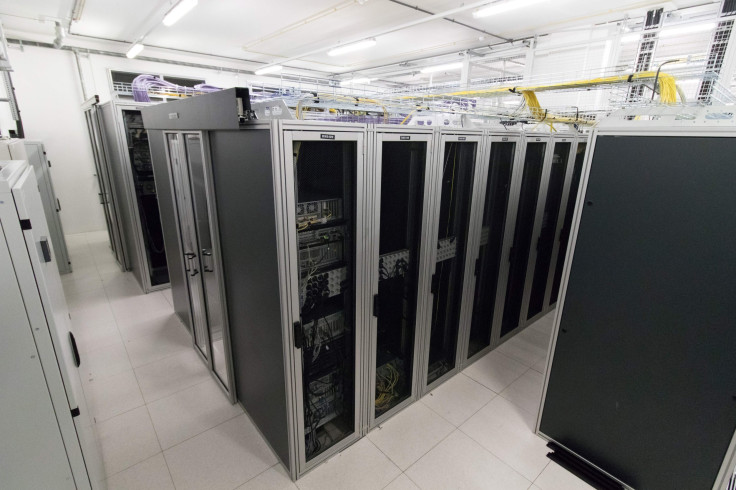eSIM Evolution, Blockchain Change In 2019 Rely On Data Centers

Data centers play a vital role in the digital transformation of many industries. As new technologies emerge and businesses aim to adopt them, they require data centers to provide the secure infrastructure and connectivity to support growth. For two industries, we’re in a time of significant technological development, as the telecoms industry embraces eSIM, and the financial services industry strives to implement blockchain. However, both of these industries will be reliant on data centers to fully and successfully integrate any new technologies into their digital strategies.
A big opportunit-e
5G promises a magnitude of benefits for both businesses and consumers including reliable, low-latency connectivity and greater bandwidth. However, it’s this increased capacity network that will have an effect on the uptake of another technology – eSIMs.
With the advent of 5G, we’ll see an acceleration in the adoption of eSIM. eSIMs allow a smartphone owner to switch between network operators, with more than one operator profile stored on the device simultaneously. This makes the process of changing provider far simpler for customers and it also means that smartphones will become more versatile, with a single device being able to replace multiple handsets with different contracts for people who have a work and personal phone.
Up until Apple’s announcement of the inclusion of eSIM capabilities in the iPhone XS, uptake of eSIM technology was fairly slow. This has been due to fears of lost roaming revenues and the ability for new, disruptive players to shake-up the market by offering more competition to consumers.
However, the telecoms industry has begun to see the potential of eSIMs, with the global eSIM market is estimated to grow to $978 million by 2023. The increasing popularity of eSIM offers an opportunity for operators to develop new services. eSIMs will make their way into a host of IoT connected devices such as wearable medical devices, smart watches and fitness trackers – all too small to hold a traditional SIM card. Operators can subsequently start offering multi-device, shared data plans, with consumers able to easily add new devices.

To enable the strict physical security requirements attached to the generation of eSIMs, platform providers will leverage colocation data centers that can tailor dedicated secure environments within a connectivity dense facility. In addition, platform providers will require to make use of Level 3 certified Hardware Security Modules (HSMs) to generate and manage the lifecycle of the eSIMs.
We’ve already seen a change in attitude regarding the technology. New guidelines introduced by the GSMA have contributed to increased awareness of eSIM’s capabilities. Throughout the remainder of 2019, we’ll likely see many operators, service providers and vendors trial and launch new eSIM-based solutions, and data centers will play a crucial role in managing this ‘always on’ global connectivity demand.
The impact of this growing emergence will be broad and will pave the way for significant developments in consumer experiences, in everything from entertainment and e-commerce to automotive.
Chain reaction
Even though the impact of eSIM is still blossoming, the potential of it is clear and the timelines for telcos are much better defined than for their tech-focused counterparts in the financial services industry.
The hype around blockchain in the last few years had led many to assume that the financial services industry would embrace the technology wholeheartedly. However, while most industry players are aware of the potential of blockchain, adoption has been slow.
Up until recently, the technology has remained a confusing topic for many businesses, with very little use case to offer significant ROI. Yet we’re now starting to see the emergence of a strong use case within the insurance and trade finance industries, in the form of smart contracts.
A smart contract is a computer code running on top of a blockchain that contains the rules for an agreement. When the pre-defined rules are met, the contract is automatically enforced. While there are still kinks in the chain to be solved, the general consensus is that smart contracts will speed up the processing of applications, claims and pay-outs.

Although blockchain was off to a slow start, we can see more impactful use cases beginning to take shape. According to PwC, by 2020, three-quarters (77 percent) of financial sector incumbents will have adopted blockchain as part of their systems or processes. While this still feels a little optimistic for the often slow-moving, cautious and heavily regulated financial services industry, there’s no doubt that the race to innovate is on.
Keys to adoption
Despite having potential use cases for blockchain, a lack of trust and security concerns have both factored into slow adoption. However, that is changing. The main concern for adopters has been how to safely secure blockchain wallets when they are ‘hot’, meaning when they are actively being stored in the cloud, as they are easily hacked. This has meant that a lot of institutions are having to store wallets offline as ‘cold’ wallets, a process which is often done on their own premises. The industry is now exploring solutions that can bridge the gap and offer more secure ‘hot’ storage.
Specifically, we’re in the midst of a growing use of encryption key security services. These services use HSMs to generate and secure keys in dedicated appliances, outside of, but in close proximity to the cloud – removing a major pain point for institutions. Colocation data centers provide the physical security for cold wallets, but close-quarter connectivity to communities of interest. We’ll see more institutions look towards colocation and services that safely guard their encryption keys as a crucial step towards more blockchain adoption in financial services.
Today, the pace of change is faster than ever. New technologies are disrupting every aspect of business. Capitalizing on the many potential applications of eSIM and blockchain technology demands that firms innovate at scale and speed, with the freedom to experiment and collaborate easily. As such, colocation strategies are well-suited to supporting rapid innovation, and data centers will play a pivotal role in supporting increased adoption of these technologies.
Patrick Lastennet is director of business development for financial services at Interxion.
© Copyright IBTimes 2025. All rights reserved.





















